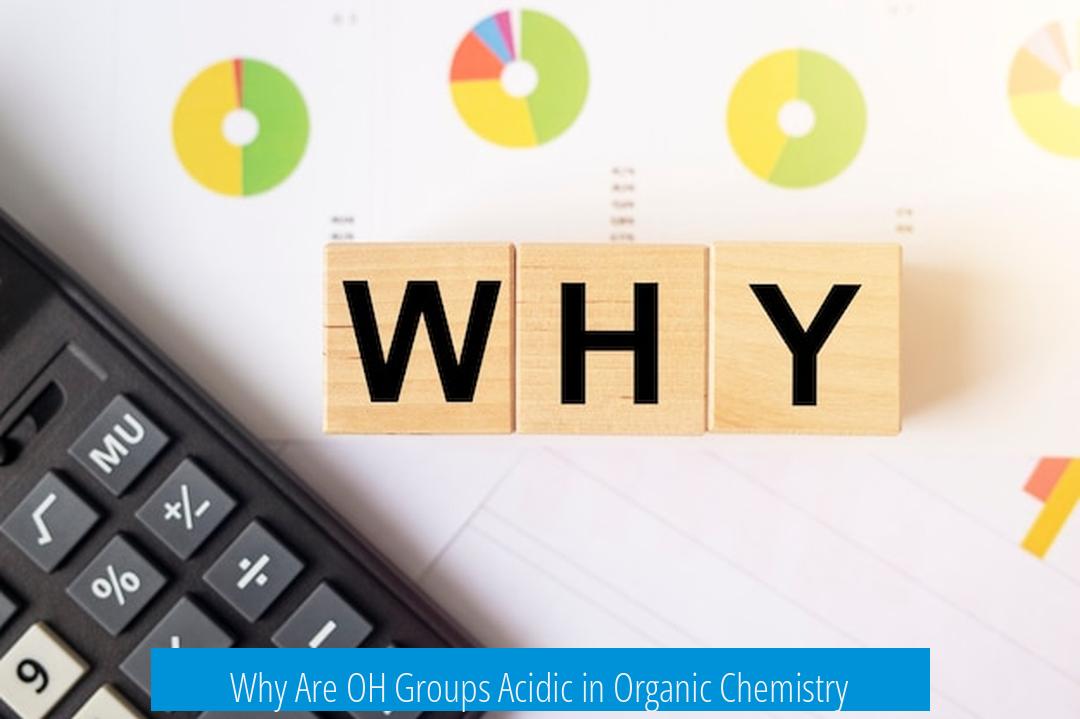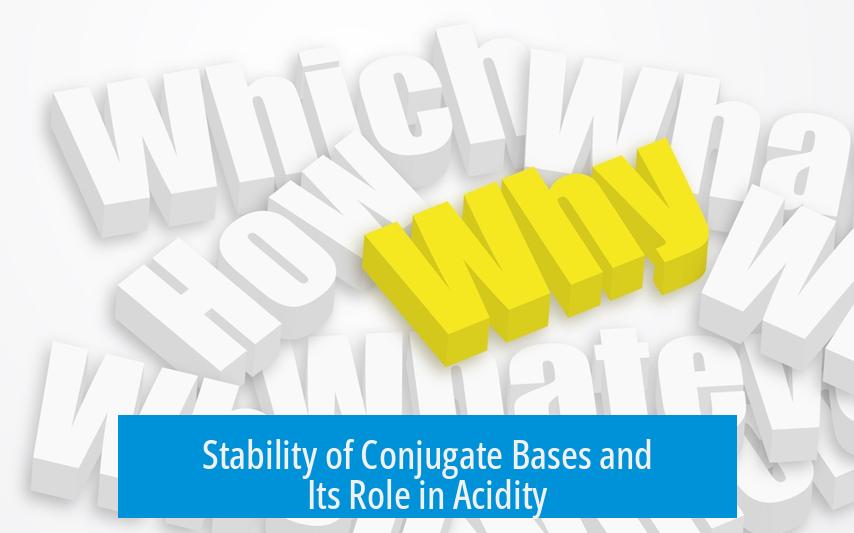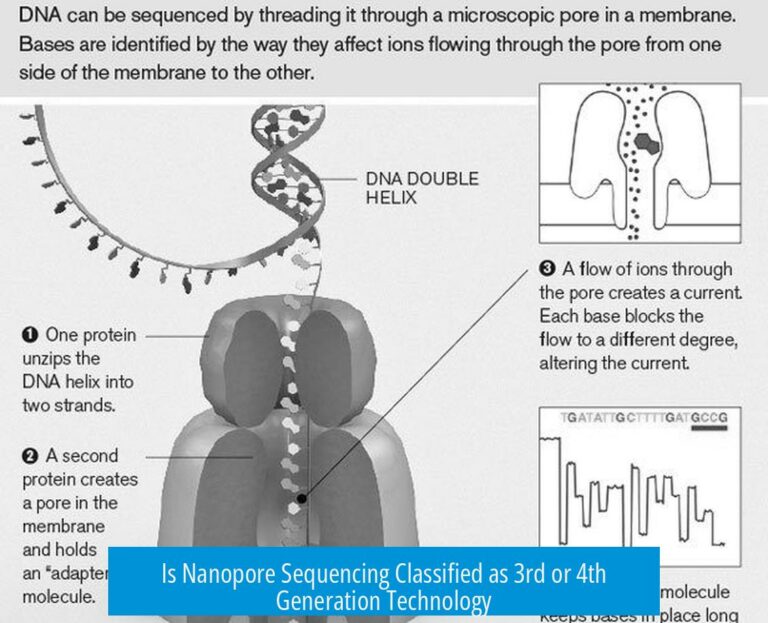Why Are OH Groups Acidic in Organic Chemistry?

OH groups are acidic in organic chemistry because they contain a proton that can be donated, exhibiting Brønsted-Lowry acidity. Their acidity depends on molecular structure, resonance effects, and the chemical environment, allowing them to act as acids or bases.
Amphoteric Nature of OH Groups
OH groups contain both a proton (H+) and lone electron pairs on oxygen. This dual character makes them amphoteric—able to act as acids by donating protons or as bases by accepting them.
- As a Brønsted acid, the OH group can lose its hydrogen ion.
- As a Lewis base, the lone pairs on oxygen can accept protons or electrophiles.
The chemical surroundings dictate which role predominates. For example, in sodium hydroxide (NaOH), the hydroxide ion (OH−) behaves as a strong base due to its negative charge. In contrast, the OH groups in phosphoric acid donate protons, acting as acids.
Neutral OH Groups in Organic Molecules
Organic OH groups appear in neutral molecules like alcohols (ROH) and carboxylic acids (RCOOH), distinct from charged hydroxide ions (OH−) encountered in inorganic chemistry.
| Species | Structure | Charge | Acid/Base Behavior |
|---|---|---|---|
| Hydroxide ion | OH− | Negative (anion) | Strong base |
| Alcohol | R-OH | Neutral | Weak acid or weak base depending on conditions |
| Carboxylic acid | R-COOH | Neutral | Moderate acid |
This neutrality reduces the intrinsic basicity seen in hydroxide ions and permits a subtler acid-base balance.
Difference in Acidity: Alcohols vs. Carboxylic Acids
Carboxylic acids (RCOOH) are more acidic than alcohols (ROH). This difference arises mainly from resonance stabilization of their conjugate bases.
- Carboxylic acids: When the acidic proton is lost, the resulting carboxylate ion (RCOO−) resonance-stabilizes the negative charge across two oxygen atoms.
- Alcohols: Losing a proton forms an alkoxide ion (RO−) where the negative charge remains localized on the single oxygen.
Resonance stabilization lowers the energy and increases the stability of the carboxylate ion. This makes the proton easier to lose, enhancing acidity.
In alcohols, the single C–O bond is less polar and lacks resonance, so the O–H bond is stronger and less acidic.
Stability of Conjugate Bases and Its Role in Acidity

The acidity of an OH group strongly correlates with the stability of its conjugate base formed after deprotonation.
- Alkoxide ions (RO−): Though strong bases, alkoxides are relatively stable because the negative charge is localized on oxygen, an electronegative atom.
- Stability improves if the alkoxide’s carbon-bearing group can better delocalize or accommodate the charge.
- The stability of carbocations formed by protonation of alcohols influences their basicity and subsequent reactions. Stable carbocations, such as those in triphenylmethanol, affect the acid-base behavior of the OH group.
Hierarchy of basicity among some alcohols relates to carbocation stability: methanol < ethanol < t-butanol << allyl alcohol <<< triphenylmethanol.
Chemical Environment and Acid/Base Behavior
OH groups in organic chemistry can act as acids or bases depending on surrounding conditions.
- With strong bases: Alcohols lose their proton to form alkoxides plus hydrogen gas. Example:
ROH + Na → RONa + 1⁄2 H2
- With strong acids: Alcohols accept a proton on oxygen forming positively charged species (ROH2+), which can undergo elimination to form alkenes.
- This reversible behavior illustrates their amphoteric characteristics. It depends on acid/base strength and reaction context.
Common Misconceptions from General Chemistry
In introductory chemistry, alcohols are often taught as neither acidic nor basic due to negligible pH changes in aqueous solutions.
However, this oversimplification ignores the nuanced acid-base interactions in organic settings where:
- Non-aqueous solvents and conditions alter the acid-base equilibrium.
- The intrinsic acidity or basicity becomes more apparent without competitive water solvent effects.
- Reactions such as deprotonation by strong bases or protonation by strong acids reveal their amphoteric nature.
Summary of Why OH Groups Are Acidic in Organic Chemistry
- OH groups contain an acidic proton and lone pairs, making them amphoteric.
- Neutral OH groups in organic molecules (alcohols and carboxylic acids) differ from hydroxide ions regarding charge and acid/base strength.
- Carboxylic acids are more acidic due to resonance stabilization of their conjugate base.
- Alcohols are less acidic due to localized negative charge on alkoxides.
- Acidity depends on the stability of the conjugate base and carbocation intermediates.
- Presence of strong acids or bases shifts OH groups between acidic and basic behaviors.
- Organic solvents and contexts reveal acid-base properties obscured in aqueous environments.
1. Why are OH groups considered acidic in organic chemistry?
OH groups have a proton that can be donated, making them Brønsted acids. Their acidity varies due to the chemical environment and stability of the molecule they are part of.
2. How does the acidity of OH groups in alcohols compare to carboxylic acids?
Carboxylic acids are more acidic because resonance stabilizes their conjugate base. Alcohols lack this resonance, so their O-H bond is less polar and less acidic.
3. What role does conjugate base stability play in the acidity of alcohols?
After deprotonation, alcohols form alkoxides. Their acidity depends on how stable these alkoxide ions are. More stable alkoxides mean the original alcohol is more acidic.
4. How do strong acids and bases affect the acidity of OH groups in organic molecules?
Strong bases can deprotonate alcohols, forming alkoxides, while strong acids protonate the OH group. These reactions highlight the amphoteric nature of OH groups.
5. Why do OH groups in organic molecules behave differently than hydroxide ions in inorganic chemistry?
Inorganic hydroxide (OH⁻) carries a negative charge and is always a strong base. In organic chemistry, OH groups are neutral and their acidity depends on their specific molecular context.





Leave a Comment